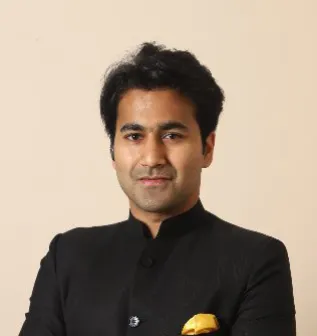
This article is part of GP-ORF series — From Alpha Century to Viral World: The Raisina Young Fellows Speak.
Lynda Gratton and Andrew J. Scott, authors of The 100-Year Life<1>, offer three defining features of work in the twenty-first century. First, people are likely to live much longer; being a centenarian will be commonplace. Second, the life of organisations will significantly reduce, so long-term employment will become a thing of the past. Third, the concept of retirement will fade away, partly due to financial reasons and partly out of choice.
Combining these factors, it is easy to visualise how one might have to spend several more years learning and unlearning to build a viable portfolio of careers. If higher education institutions are not doing their job, what are our alternatives?
What we are witnessing now is the great unbundling of education where different companies and communities are attempting to capture one part of the bundle.
Historically, education was an amorphous bundle of core skills, soft skills, critical thinking, signalling value and networking. What we are witnessing now is the great unbundling of education where different companies and communities are attempting to capture one part of the bundle. For instance, the Lambda School, an online technical education programme, is focused only on core skill building to make people of all backgrounds ready for careers in the computer sciences.
Changing focus areas
The unbundling of education has brought about four tectonic shifts — career choices driven by the return on investment (ROI), a move towards lifelong learning, shorter durations, and new business models.
Usually, the period after a recession or emergency — such as the one we are currently experiencing — sees a spike in ROI-driven career decisions. About 80 percent of students surveyed at the University of California, Los Angeles<2>, said that education was a means towards employment. Clearly, there is a mismatch between what students want and what traditional universities offer. Students want to learn tangible skills like coding, marketing and sales in a condensed timeframe. One can argue that this is short-term thinking that will backfire, but this does not discount existing customer demand.
Usually, the period after a recession or emergency — such as the one we are currently experiencing — sees a spike in ROI-driven career decisions.
The second shift being witnessed is a move towards lifelong learning. The traditional model was to conclude all education, including a graduate degree, as quickly as possible and apply that learning in a job. This model no longer works. The new normal is to have study/learning time interspersed throughout one’s work life. This is a huge opportunity for entrepreneurs and investors. The 26-35-year-olds looking for self-improvement/lifelong learning constitutes the largest opportunity in China, much greater than K-12 or test preparation<3>. While this spending analysis is focused on China, it is likely to be true for the rest of the world as well.
The third shift is that students want to pursue courses of a shorter duration. Because of the focus on lifelong learning, students are keen to spend lesser time on one block of learning. Make School, which also has an offline campus, is a two-year programme with extremely high employment rates. There are many similar examples. The rationale is that if we must go to school multiple times, then one block school should not be too long. People want to make their time count and capitalise on the latest trends.
The new normal is to have study/learning time interspersed throughout one’s work life.
Lastly, there is a shift in business models. The growing popularity of income share agreements reflect changing attitudes where students are not willing to make huge, one-time payments upfront. This not only changes the student financing market but also forces educational institutions to focus on student outcomes, specifically their employment.
Waves of disruption
The unbundling of education will bring about disruption in multiple waves. The first wave will include channels of learning hard skills with direct employment prospects. Think of coding bootcamps, MOOCs (Massively Open Online Courses) with certifications and nano degrees. These are high arbitrage opportunities but very few such disruptions have worked at scale so far.
A big reason people choose to go for higher studies is to network, and this is where the second wave of disruption is likely. Alternatives to traditional networking in the form of co-working spaces, accelerators, private networks, curated associations and peer-mentoring communities are likely to add another area of massive disruption.
A big reason people choose to go for higher studies is to network, and this is where the second wave of disruption is likely.
Students empowered with hard skills and networks will make a huge push for soft skills. Several innovations can be expected in this space in the coming years. The ones that will work are likely to be able to demonstrate tangible benefits for students and young professionals. There might not be a need to go to college to pick up soft skills or network.
Studying or working at an elite institution or organisation signals competence to our network. It also increases our perceived social value. The fourth wave of disruption is likely to be the emergence of organisations where membership, association or affiliation signals equal or greater competence.
The late Clayton Christensen, a Harvard Business School professor, famously said that 50 percent of all colleges will go bankrupt in the coming decade(s). The COVID-19 crisis has pushed many more colleges to collapse than estimated. The ones that survive will adapt to the great unbundling of education and combine two essential components of learning in the twenty-first century — artificial intelligence (AI) and communities.
The fourth wave of disruption is likely to be the emergence of organisations where membership, association or affiliation signals equal or greater competence.
AI + community = Future of learning
The factory-inspired, nineteenth century model of education made sense when there were severe limitations on teaching resources. But AI can help us overcome such constraints by leveraging three of its defining features — perception, recognition and recommendation, thereby creating personalised learning for students and more free time for instructors.
An AI-powered higher education experience will operate on four planes — virtual teaching, learning assessment, opportunity matching for internships and jobs, and mentoring from peers and experts.
Imagine Sally sitting in Beirut. She is enrolled in a distance learning programme that brings together leading data science professors from around the world and awards a degree valued by the most coveted employers. She attends lectures in a co-working space. There is a video camera at the front of the room that uses facial recognition and posture analysis to take attendance and figure out if Sally is paying attention. Maybe she is unwell and not able to concentrate. All this data is fed into her student profile and a customised homework plan is created for her. Sally completes her assignment with some help from her peer mentor, with whom she is matched based on her learning needs. They build a friendship and, over time, start working on complex data sets together. They figure out a way to optimise an algorithm that is precious to one of the programme sponsors. After several rounds of back-and-forth, they decide to patent their solution and work on their idea independently. They move from a full-time degree programme to a flexible-part time option designed for entrepreneurs.
There is an urgent need to complement AI-based learning tools with the power of communities. This approach will humanise the way we think about higher education and technology.
The example might sound compelling, but it is bound to fail in the short term. Today, there are innumerable digital learning platforms powered by AI that are struggling to find customers. Even when students sign up, only 3 percent<5> end up completing course requirements.
Research presented by Dr Susan Dynarski from the University of Michigan makes it abundantly clear that while online education works for mature learners<6>, it can harm academically weak students and compromise on conceptual learning. Clearly, the AI-powered education technology model is missing something critical. That is why there is an urgent need to complement AI-based learning tools with the power of communities. This approach will humanise the way we think about higher education and technology.
No matter how sophisticated our gadgets become, it is hard to relate to shiny, dark screens. Humans have a fundamental need to belong, learn and share. We need meaningful communities as they are force multipliers. They make learning fun and create a peer-to-peer accountability mechanism that shapes a culture of learning. AI enables personalisation at scale.
Only by combining both AI and communities will higher education be relevant and prepare students for the adventures of the fourth industrial revolution. The good news is that traditional educational institutions are not the only ones that can create this customised offering. The decoupling of education means that far more players are now competing in the market. This is likely to democratise learning and make it accessible to far more than those who can afford to pay a US$250,000 for an advanced degree.
Endnotes
<1> Andrew J Scott and Lynda Gratton, The 100-Year Life – Living and Working in an Age of Longevity (Bloomsbury Publishing, 6 February 2016).
<2> Labor Summer Research Program Team, Workers and Learners during a Global Pandemic and Social Uprising, UCLA Labor Center, 2020.
<3> Jonathan Woetzel et al., “Reskilling China: Transforming the world’s largest workforce into lifelong learners,” McKinsey Global Institute, 12 January 2021.
<4> Abigail Johnson Hess, “Harvard Business School professor: Half of American colleges will be bankrupt in 10 to 15 years,” CNBC, 30 August 2018.
<5> Doug Lederman, “Why MOOCs Didn't Work, in 3 Data Points,” Inside Higher ED, 16 January 2019.
<6> Larry Sanders, “In NYT, Susan Dynarski advises against online courses for struggling students,” Ford School News, Ford School, University of Michigan, 19 January 2018.
The views expressed above belong to the author(s). ORF research and analyses now available on Telegram! Click here to access our curated content — blogs, longforms and interviews.




 PREV
PREV


